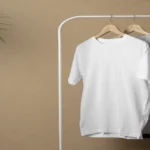TikTok vs Instagram: Differences & Which is Better for your Brand
Posted in :
Instagram vs. Tiktok: Which Platform is Better for Beauty Brands?
Social media is the backbone of brand marketing, and for beauty and skincare brands, the right platform can make all the difference. With Instagram and TikTok leading the way, many marketers are now debating TikTok vs Instagram for business—which one truly delivers better engagement, brand awareness, and sales?
This is a crucial question for beauty entrepreneurs, skincare influencers, and marketing teams in the cosmetic industry. Instagram, known for its polished aesthetics and influencer collaborations, has long been a powerhouse for beauty brands. Meanwhile, TikTok’s short-form, viral-driven content has redefined digital marketing, making it easier for emerging brands to gain rapid traction.
In this post, we’ll compare Instagram and TikTok based on audience engagement, content style, and marketing effectiveness. By the end, you’ll have a clearer understanding of which platform aligns best with your beauty brand’s goals.

Why Choosing the Right Platform Matters for Beauty & Skincare Brands
Digital-first world, choosing the right social media platform can make or break a beauty brand’s success. With over 4.95 billion people using social media globally, brands must be strategic about where they invest their marketing efforts.
For beauty and skincare companies, Instagram and TikTok offer vastly different opportunities:
- On Instagram, brands can leverage high-quality imagery, influencer partnerships, and shoppable posts to build a premium, curated presence.
- On TikTok, brands thrive on organic virality, short-form video trends, and authentic user-generated content that resonates with younger audiences.
Understanding which platform aligns best with your brand’s goals impacts customer engagement, sales conversions, and long-term brand loyalty. Studies show that TikTok users are 1.7x more likely to purchase products they discover on the platform compared to Instagram users (TikTok Marketing Science, 2023). However, Instagram remains the top platform for influencer marketing, with 67% of brands preferring it for campaigns (HubSpot, 2024).
With competition fiercer than ever, knowing where your target audience spends time and how they interact with content is key to building a successful beauty or skincare brand. So, which platform should you choose? Let’s break it down.
1. Instagram: The Hub for Aesthetic Branding & Influencer Marketing
Why Instagram Works for Beauty Brands
Instagram has established itself as the go-to platform for beauty and skincare brands due to its focus on visually driven, curated content. Featuring Instagram Shopping, Reels, and Stories, the platform allows brands to integrate content with e-commerce seamlessly.
The Following are the Key Benefits:
✅ High-quality visual content – Perfect for luxury skincare and high-end beauty brands.
✅ Influencer collaborations – 67% of brands prefer Instagram for influencer marketing (HubSpot, 2024).
✅ Shoppable posts & in-app purchases – Reduces friction in the customer journey.
Example: Glossier’s Instagram Strategy
Glossier built a cult following by using user-generated content (UGC) and influencer partnerships. Their Instagram is filled with minimalist aesthetic shots, real customer testimonials, and interactive Stories to keep their audience engaged.
📌 Tip: Use Instagram Stories & Highlights to answer common skincare questions, share customer reviews, or feature product tutorials.
2. TikTok: The Power of Viral Trends & Authenticity
Why TikTok Works for Beauty Brands
Short-form, engaging video content is what makes TikTok ideal for product demos, skincare hacks, and viral challenges. The platform’s algorithm prioritizes authenticity, giving smaller brands the chance to compete with larger names by creating relatable content.
Here are the Key Benefits:
🔥 Viral potential – TikTok’s algorithm allows brands to reach new audiences without a huge following.
🔥 Authenticity sells – Consumers trust raw, behind-the-scenes content over polished ads.
🔥 Community-driven trends – Challenges like #CleanGirlAesthetic and #GRWM (Get Ready With Me) help brands gain visibility.
Example: CeraVe’s TikTok Boom
CeraVe went viral thanks to dermatologist recommendations and TikTok creators like Hyram, who praised the brand’s affordable and effective skincare. The brand saw a 40% increase in sales after trending on TikTok.
📌 Tip: Use TikTok’s Duet and Stitch features to interact with trending skincare conversations and boost brand awareness.
3. Which Platform Should You Choose?
It depends on your brand’s goals!
- If you prioritize premium branding, influencer partnerships, and e-commerce integration choose Instagram.
- Choose TikTok if you want organic virality, audience engagement, and rapid brand discovery.
📌 Pro Tip: Many beauty brands successfully use both platforms—Instagram for high-quality branding and TikTok for fun, engaging content.
Final Thoughts
When it comes to beauty and skincare marketing, both Instagram and TikTok offer powerful opportunities—but in different ways. Instagram excels in aesthetic branding, influencer partnerships, and shoppable content, making it perfect for brands focused on premium visuals and e-commerce. On the other hand, TikTok’s viral trends, raw authenticity, and high engagement rates make it ideal for brands looking to gain organic exposure and connect with a younger audience. The key takeaway? The best platform for your beauty brand depends on your goals.
Ready to Elevate Your Beauty Brand’s Social Strategy?
Choosing the right platform is just the first step—executing a winning content strategy is what truly sets brands apart. Whether you’re looking to boost engagement on Instagram, create viral TikTok content, or combine both for maximum impact, we’re here to help!
Let us help you with our services to help you reach your goals.
✅ Crafting high-converting Instagram & Tiktok content
✅ Leveraging influencer partnerships for maximum ROI
✅ Mastering social media trends to grow your brand
